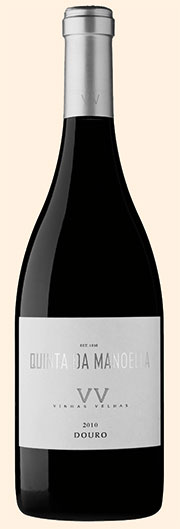Douro wines


Roula Khalaf, Editor of the FT, selects her favourite stories in this weekly newsletter.
In an ideal world I’d make all my notes when tasting wine and visiting vineyards straight on to my laptop. I apologise to all those people obstructed at the tasting table by me and my Toshiba (perched on a six-bottle wine carton to preserve me from backache) but it saves hours and hours of transcription and my handwriting is so much less legible than my typing. I’m still struggling with iPad keyboards and, no, a voice recognition system won’t work because I usually have my mouth full when I write tasting notes (and I don’t always want the person pouring to hear my reactions).
But in wine country itself it’s hard to use a computer. Burgundy’s cellars are particularly short of both light and flat surfaces (the curvature of a barrel can be a dangerous place to rest a laptop). And although in theory being a passenger in a car driven by a wine producer provides the perfect setting, effective note-taking depends entirely on the road surface.
I look at the notebook I took with me to the Douro valley last month and can chart precisely which bits were written on one of northern Portugal’s impressive new network of motorways and which on the quite extraordinarily rough track between the quintas, or farms, of Jorge Serôdio Borges and Jorge Moreira. In the latter case I’d just had the most idyllic lunch on a vine-shaded terrace at Quinta da Manoella, an old, rundown family property recently taken over by Borges and his glamorous but fortunately Douro-fixated ex-model winemaker wife, Sandra Tavares.
We sat under ripe bunches of pink Moscatel and Tempranillo grapes, enjoying exceptional dishes cooked by a local chef and Douro table wines sold under their much-admired Wine & Soul label (as well as some vintages from the Dutch-owned Quinta do Passadouro, for which Borges is responsible).
At the beginning of this century Borges and Tavares were leading lights with their full-throated Pintas red in the emergence of Douro table wines in what was traditionally strictly port country. But as Borges says: “What was perfect for us then is different today. We are looking for much more elegance. Keeping Pintas fruit but showing it in a different way. Pintas 2001 was a perfect wine for that time, the boom in the Douro. Now our wines are very refined and even more complex.”
And perhaps now that he is at the atmospheric, near-deserted Quinta da Manoella where he has inherited considerable stocks of maturing tawny port, he is at pains to stress the history of this extraordinary corner of the world, a Unesco world heritage site. He is a fifth-generation port producer. His grandfather was the key supplier when the Churchill port label was established. His relatives still sell port in bulk and even he sells some grapes to Taylor’s for its port “because we don’t have sufficient capacity in our winery – but it’s a pity that so many of the younger producers are focusing on Douro table wines. Port must not be forgotten”.
How can Borges make port more important for the younger generation? “The [rules are] currently too bureaucratic,” he says. “At the moment you need a minimum of 150,000 litres to produce port. We should abandon that because we need to bring in new people. What happened to Douro table wine should happen to port. The production quota system should operate over a longer period than a single year, which would mean that the big producers couldn’t do silly low price deals with UK supermarkets.”
Fighting talk, but it was halted by the arrival of Jorge Moreira, who was due to drive me to his quinta on the opposite, north-facing side of Pinhão valley, on a tiny dirt track that goes right down to the valley floor and up again.
The two Jorges are such good friends that, together with their friend, Francisco Olazabal, they produce a wine called M.O.B. in the neighbouring Dão region. (“The guys love to get together and gossip and [they] taste so long they forget to decide what they meant to,” is how Moreira’s wife, Olga, describes the project.)
On the bone-shattering journey (4x4s are a prerequisite for any wine producer in the Douro valley) Moreira told me about the 2013 vintage that was then drawing to a close. What my jerky, spidery writing seems to say is that there were unusually heavy rains – totalling about 70mm out of an average annual total of 600mm – during the 2013 harvest, particularly at the very beginning of October. And that this year, exceptionally, the most famous (but not most planted) Douro valley grape, Touriga Nacional, was the last to be picked, thanks to the very late spring that affected so much of Europe.
Eventually, after many a jolt, we rejoined a paved road on the north side of the valley and reached his neat farmhouse-cum-winery with beautifully cut shards of schist from the valley’s famous rock base. Here he makes particularly fine whites as well as reds under his Poeira label with an elegance that owes much to its sheltered north-facing position. We tasted outdoors in shadow, in fact, overlooking the Taylor’s Terra Feita quinta far below where we saw teams of people looking like ants going in to tread grapes in time-honoured fashion. Thanks to Iberia’s current economic crisis, it has been much easier to recruit grape-treaders this year, apparently.
What is more of a concern is that the going price for grapes in the Douro is hardly more than the cost of having them picked. Just one glance at any photograph of the extraordinary topography of the underpopulated Douro valley is enough to demonstrate that viticulture will never be cheap in this corner of the wine world and deserves our support. That it produces wines as delicious and distinctive as those listed on the previous page is even more reason why we should support the region by paying the going rate for them – at least.
——————————————-
Tasting notes on Purple Pages of JancisRobinson.com; Twitter @JancisRobinson
Stockists from wine-searcher.com
——————————————-

Jancis’s picks
All of these are Douro wines unless otherwise stated. The best UK retailer is prestigewinesportugal.com
WHITES
• Ramos Pinto, Duas Quintas Reserva 2012
• Pó de Poeira 2010 VR Duriense Branco
REDS
• Graça Tinta Cão Reserva 2009
• Pintas Character 2011
• Pintas 2011
• Pintas 2010
• Poeira 2010
• Poeira 2011
• Quinta da Manoella 2011
• Quinta da Manoella Vinhas Velhas 2011
• Quinta da Manoella Vinhas Velhas 2010
• Ramos Pinto, Duas Quintas Reserva Especial 2007
Comments